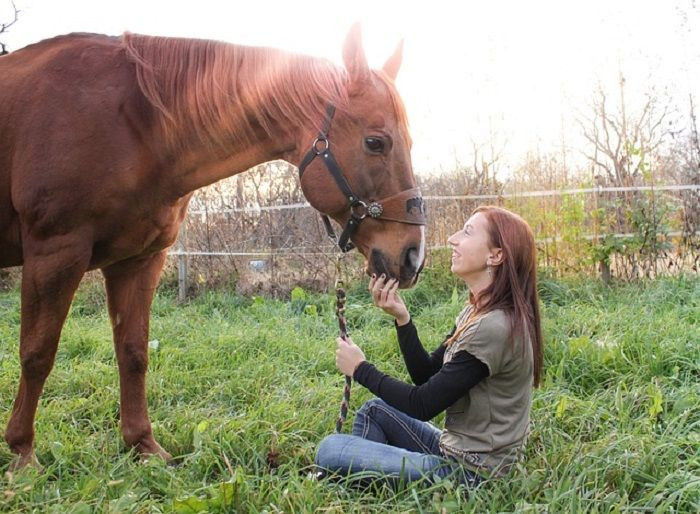Horses May Understand Human Emotions, Distinguish Between Happy And Angry Facial Expressions

It seems that in addition to sharing the same facial expressions with humans, horses may also have the ability to read their emotions. New research published in Biology Letters finds that the four-legged animals are able to differentiate between human facial expressions.
"What's really interesting about this research is that it shows that horses have the ability to read emotions across the species barrier,” Amy Smith, who co-led the study, said in a statement. “We have known for a long time that horses are a socially sophisticated species but this is the first time we have seen that they can distinguish between positive and negative human facial expressions."
For the study, researchers recruited horses from five riding or livery stables in the United Kingdom between April 2014 and February 2015 and examined their reactions to photographs of two unfamiliar male faces with happy and angry facial expressions. When horses were shown angry expressions, their heart rate increased more quickly and they showed more stress-related behaviors.
Furthermore, the animals showed a tendency to view angry faces with their left eye, a behavior researchers say is associated with perceiving negative stimuli. According to the study, horses view negative events with their left eye due to the right brain hemisphere's specialization for processing threatening stimuli. Past research has shown that in many species, including horses, information from the eye is processed in the side of the brain opposite the eye of origin.
The horses’ strong reaction to angry facial expressions compared to happy faces — faster heart rate, and viewing the angry faces with their left eye — made it clear that they were able to distinguish between the two emotions. While the animals had a strong reaction to negative facial expression, they had a weaker reaction to positive or happy facial expression.
“This may be because it is particularly important for animals to recognize threats in their environment,” explained Smith, a doctoral student in the Mammal Vocal Communication and Cognition Research Group at the University of Sussex. “In this context, recognizing angry faces may act as a warning system, allowing horses to anticipate negative human behavior such as rough handling.”
Although the study has demonstrated horses’ emotional awareness, it could not pinpoint when, why, or how horses developed a functionally relevant understanding of human emotions given the difference in facial structures between horses and humans.
“Horses may have adapted an ancestral ability for reading emotional cues in other horses to respond appropriately to human facial expressions during their co-evolution. Alternatively, individual horses may have learned to interpret human expressions during their own lifetime,” said Karen McComb, a co-lead author of the research.
Smith said the next step in their research is to examine the relationship between emotional skills and social behavior in horses.
Source: Smith A, Proops L, Grounds K, Wathan K, McComb K. Functionally Relevant Responses to Human Facial Expressions of Emotion in the Domestic Horse (Equus Caballus). Biology Letters. 2016.
Published by Medicaldaily.com



























